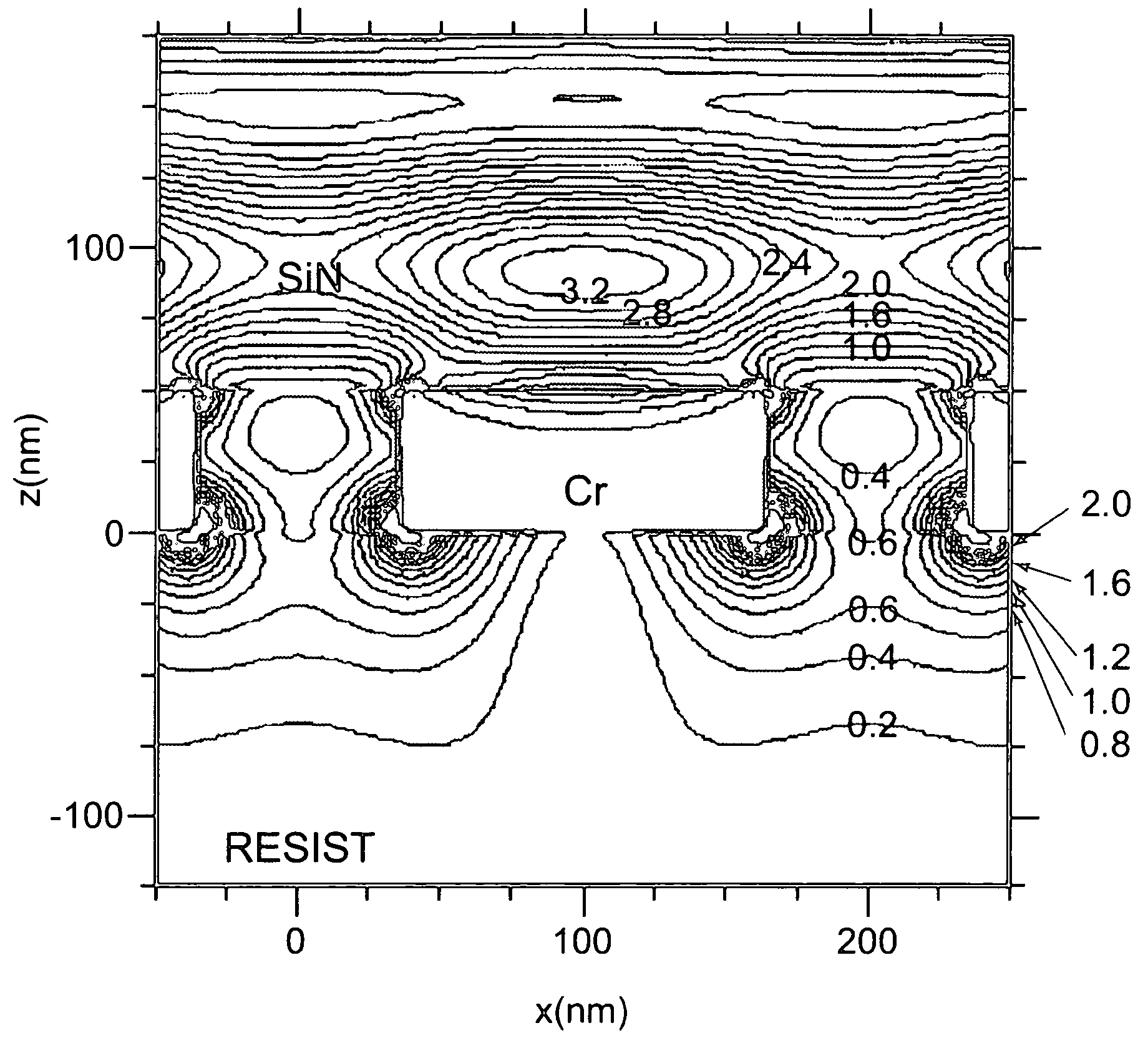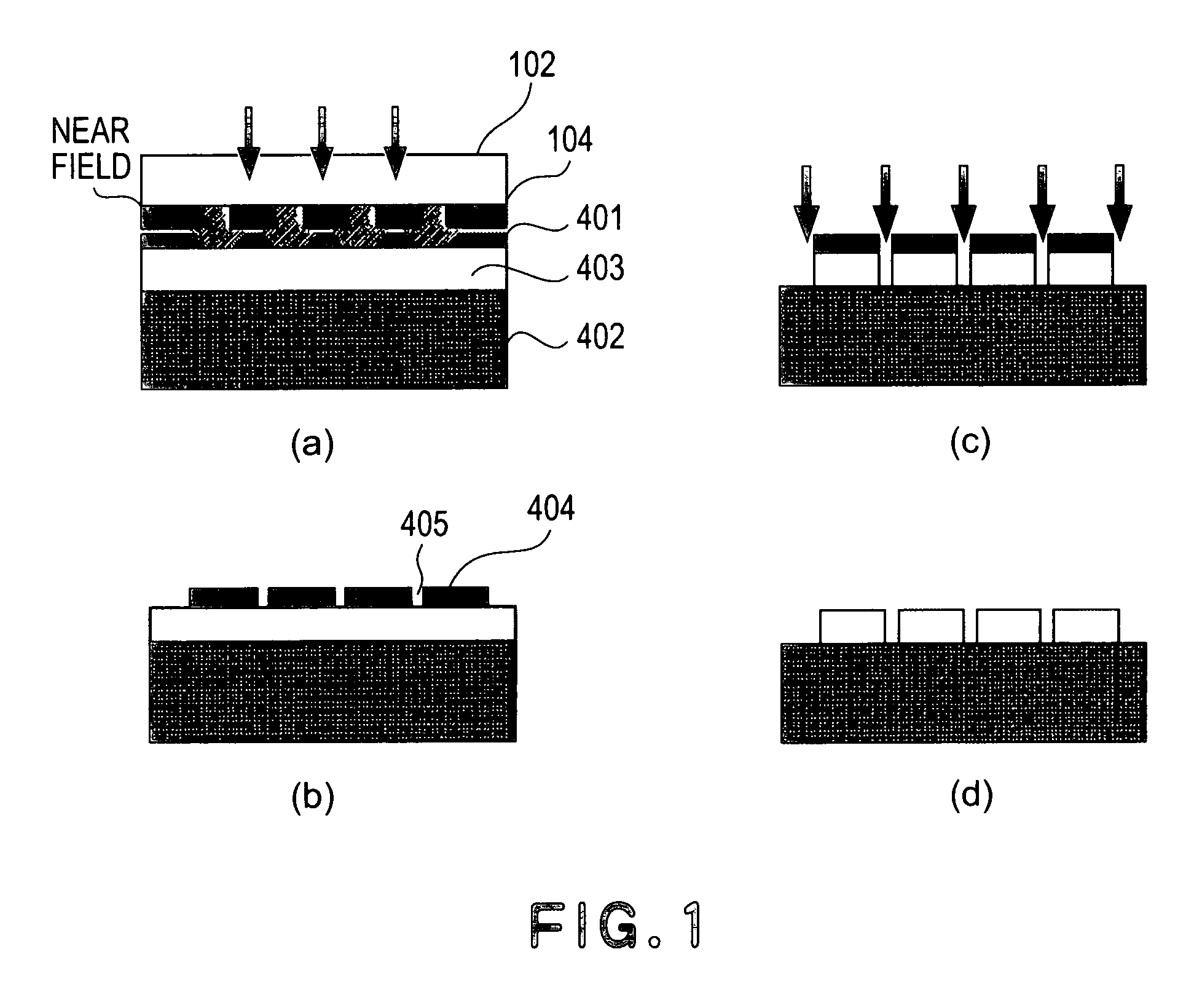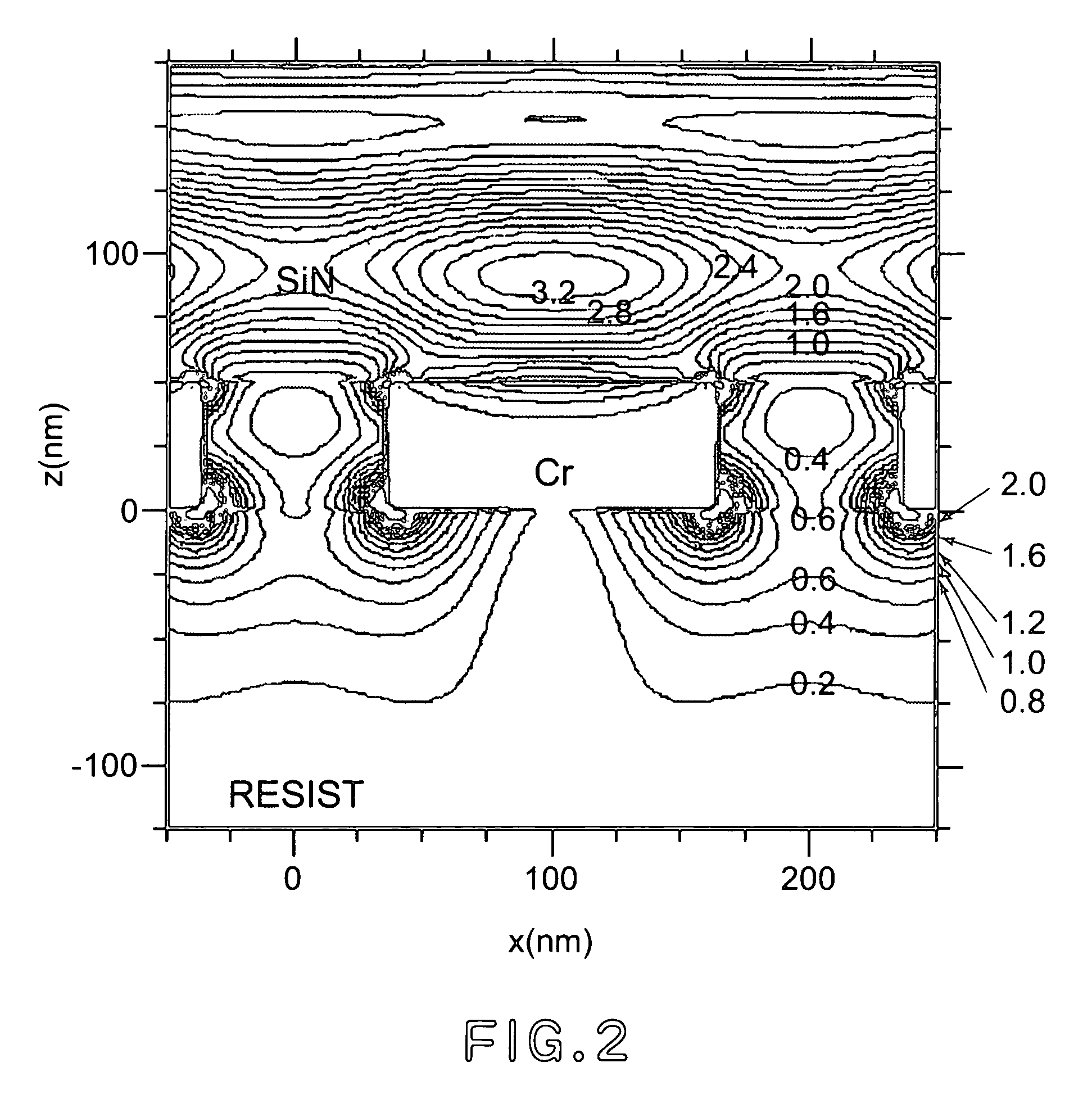Mask manufacturing method
a mask manufacturing and lithography technology, applied in the field of mask manufacturing methods, can solve the problems of shortening the wavelength of laser light, affecting the quality of masks, and taking a long time, and achieve the effects of short time, fine opening, and cheap and simple manufacturing
- Summary
- Abstract
- Description
- Claims
- Application Information
AI Technical Summary
Benefits of technology
Problems solved by technology
Method used
Image
Examples
Embodiment Construction
[0028] Hereinbelow, embodiments of the mask manufacturing method according to the present invention will be described.
[0029] Herein, a mask as an original (original mask) is referred to as a “first mask”, and a mask manufactured on the basis of a fine pattern formed with the first mask through near-field exposure is referred to as a “second mask”.
[0030]FIG. 4 shows an example of the first mask used in an embodiment of the mask manufacturing method of the present invention. In the following description, as shown in FIG. 4, a width of each opening is referred to as an “opening width”, and a width of a light blocking film (a spacing between adjacent openings) is referred to as an “opening spacing”.
[0031] The first mask has an opening width which is smaller than a wavelength of exposure light described later. When light enters an opening having the opening width smaller than the light wavelength, it is possible to create a near field only in the vicinity of the opening.
[0032] In a f...
PUM
 Login to View More
Login to View More Abstract
Description
Claims
Application Information
 Login to View More
Login to View More - R&D
- Intellectual Property
- Life Sciences
- Materials
- Tech Scout
- Unparalleled Data Quality
- Higher Quality Content
- 60% Fewer Hallucinations
Browse by: Latest US Patents, China's latest patents, Technical Efficacy Thesaurus, Application Domain, Technology Topic, Popular Technical Reports.
© 2025 PatSnap. All rights reserved.Legal|Privacy policy|Modern Slavery Act Transparency Statement|Sitemap|About US| Contact US: help@patsnap.com



